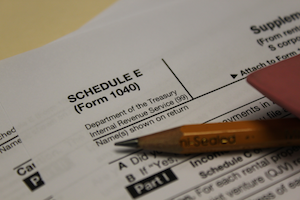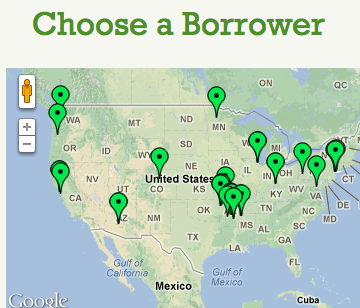How to Put Together a Winning Taxable Investment Portfolio

Editor’s note: This is a an article from Jeff Rose, who wrote the book Soldier of Finance. Since Jeff is a CFP I asked him to share his thoughts on building a taxable investing portfolio – something I’m hoping to do in the near future. Here’s Jeff…
Let’s face it, paying taxes is a major letdown.
That’s why financial planners like myself love tax-advantaged investment accounts. They offer you the chance to set aside money for the future in an efficient manner (i.e. avoiding taxes).
Unfortunately, the IRS limits as to how much you can contribute to a tax-advantaged account each year. Boo IRS! This applies to the Roth IRA (my favorite), the traditional IRA, and your retirement plan at work (401k, 403b, TSP, etc).
I know I’m stating the obvious here, but if you’re able to max out all your retirement accounts, then you’re doing pretty good.
But when you reach your limit, it’s time to start taxable investing by putting together a taxable investment portfolio.
Grow (and Use) Your Wealth Before Retirement
A taxable investment account allows you to grow your wealth — and use it without penalty before retirement. When I explain the concept to clients, I tell them it’s like a savings account at your bank. The only (big) difference is that you’re invested into many different things that your bank can’t provide.
You have more access to these funds depending, of course; in what you invest into. Because you have more access, you won’t have the same tax benefits that your retirement accounts offer.
In fact, when you go to sell your investments in these accounts, you’ll be potentially paying capital gains tax (we’ll explain more in a bit).
Kind of a bummer. But as I always tell people, having to pay tax because you made money might not be desirable, it’s better than taking a loss.
Your taxable investment account can provide you with a source of wealth that you can tap into now, as long as you are willing to pay taxes on the income right now. Here are some of the options you have when it comes to building your taxable investment portfolio:
Stocks and Mutual Funds
Almost anyone can open an account with an online discount brokerage and invest in stocks and/or mutual funds. You can even consider dividend stocks that pay out regularly, on top of the chance of capital appreciation.
I’ve had many clients that have done really well over the years investing in stocks. What was the key to their success? They invested in stocks they were familiar with and made sure to diversify as their wealth grew.
Every once in a while you’ll hear a story about how someone hit it big by investing all their money into one stock. For every one success story you hear, there are about 247 stories where people lost their butt. Don’t be one of those people.
If you are worried about individual stock picking, invest in mutual funds (including index funds) or in exchange traded funds (ETFs). You’ll get access to diverse offerings, without the risks associated with investing in individual stocks.
If you go this route, I would suggest to do totally different mutual funds that you have in your 401k and other retirement accounts. For example, I recently spoke to a person that had all of their money in a target-date retirement fund. By everything I mean their 401k, Roth IRA AND their taxable account.
You can have a similar investment strategy in your taxable account, but I highly suggest you use different investments to give you greater diversification.
Peer-to-Peer Lending
Peer-to-peer (P2P) lending has become huge in the past couple of years and something that I’m very excited about. You can create regular cash flow by lending money to your peers.
Sites like Prosper arrange for you to fund others’ loans in small increments of $25. This way, you aren’t risking a lot of money on one loan that might default. Put together a portfolio of notes on a P2P site, and you can receive the benefit of interest payments regularly.
What excites me to much about this? With the Dow Jones flirting with all-time highs, I’m hesitant to dump a big chunk of money in. I’ve been testing Propser for over three years and the returns have been comparable to what you would expect to get out of the stock market. And while there is risk involved, I’m currently more confident in preserving principle using this method.
Municipal Bonds
These are a little boring, but they are effective. Many municipal bonds pay competitive interest rates, and, as a bonus, they are quite tax efficient. The federal government doesn’t collect taxes on “muni” bond interest earnings, and some states won’t charge you income tax if you are a resident of the state you are buying bonds in.
Buying individual bonds isn’t as common as it used to be. But it still exists. Other ways to get tax-free bonds is getting them through mutual funds or ETF’s such as HYD a high-yield municipal bond ETF.
Cash Value Life Insurance
The jury is still out on this one for me. It’s tempting to try to invest using cash value life insurance. While there is the chance of returns, it’s important to tread carefully. This type of insurance isn’t always worth it, especially since returns are so low that they rarely beat inflation.
What people don’t realize is that there are several different types of cash value life insurance, e.g.; whole life, variable life, universal life, indexed universal life. All of these operate differently and reading the fine print is imperative.
Other Investments
You can also invest in other assets, like small businesses and real estate. These investments come with their own risks, and you usually need quite a bit of capital. If you don’t want to invest in someone else’s business, you could always invest in yourself by starting your own side hustle.
I experimented with real estate and realized that it wasn’t my thing. What I found is my thing is starting a blog which has been a nice supplemental income for the past couple of years. The point is there are many different things you can invest into. You just have to find out what works best for you.
All of these investment provide you with the chance to earn money right now. You can use it immediately, for whatever you want. Building a good taxable investment portfolio can provide you with a way to increase your wealth, and your access to assets, without the worry of restrictions on when and how to withdraw your money.
But you have to remember that this is a taxable account.
Paying Taxes on Your Portfolio Earnings
Since you aren’t taking advantage of a tax-advantaged account, you are going to have to pay taxes on your portfolio earnings when you realize them. This means that when you earn interest, you pay taxes on it. When you sell a stock at a profit, you pay taxes on the money you earn.
Part of building a good taxable investment portfolio is trying to make it as efficient as possible. First of all, understand the difference between long-term gains and short-term capital gains.
- When you sell an asset you have held for a year or less, your gain is taxed at your marginal rate.
- If you sell an asset held for more than a year, your gain is taxed at a special, lower rate.
Pay attention to when you purchase your assets, and try to sell the oldest assets first. If you’re not sure how to do this, talk with your tax professional or your brokerage firm. They should be able to help out with this.
Some investment income is taxed at your marginal rate, no matter how long you have the asset. Interest you earn from bond investments (except municipal bonds), P2P lending, and cash products is taxed at your marginal rate, no matter the situation.
With the right assets, and with attention to the tax situation, you can build a portfolio that provides you with income for your immediate use.
Are you doing any taxable investing? What investments are you using? What percentage of your entire portfolio are you investing in the taxable account?






